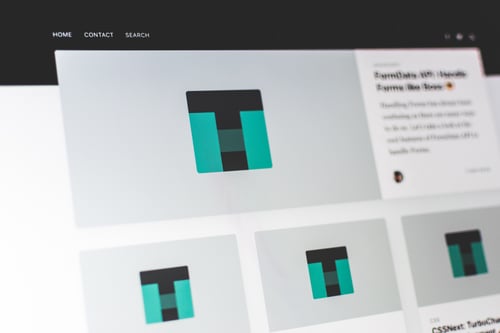
SEO Penalties: The Six Ways Your SEO Strategies Aren’t Helping You
.jpg?width=300&name=benjamin-dada-EDZTb2SQ6j0-unsplash%20(1).jpg) You’ve heard so much about the importance of search engine optimization and what you can do to show up higher on a search engine results page (SERP) so you can get noticed by more and more potential customers and clients.
You’ve heard so much about the importance of search engine optimization and what you can do to show up higher on a search engine results page (SERP) so you can get noticed by more and more potential customers and clients.
But are you doing too much to increase your SEO?
Many search engines like Google are putting tools in place and designing algorithms to protect their users from having to wade through a sea of pages and search results that are too cluttered with keywords or other “tricks” to increase their SEO instead of focusing on providing useful, helpful information.
What does this mean for you? It means that some of your SEO strategies may actually be hurting your standing on a SERP.
So which “tricks of the (SEO) trade” are outdated or harmful?
1- Keyword Stuffing
Keywords are definitely your friend when it comes to boosting your SEO. You have great content, and adding a few keywords here and there is a great way to get your content noticed in Google’s search algorithm.
But adding a keyword or key phrase into your text one too many times is known as “stuffing.” Sometimes you might see this show up even as a list of search terms, included out of context of the content, just to get noticed by search crawlers.
Keyword stuffing used to be a pretty successful practice—until various search engines caught on and started to penalize websites for adding a key search term into the content too many times.
Now? Adding a key search term too many times can actually lower your search ranking—or get you removed from the search results entirely.
If you are trying to boost the search rankings for your high-powered blender, and you include that phrase in every other sentence to the point that your text is crammed-full with the phrase “high-powered blender,” over and over again, and it seems repetitive or doesn’t even make sense? You’re guilty of keyword stuffing.
But how much is too much? Search Engine Journal offers the following advice: Limit your keyword density to 2% of the overall copy.
2 - Hidden Text and Links
Another issue similar to keyword stuffing is including “hidden text,” which is exactly what it sounds like: Having text embedded on your page that isn’t visible to the page’s visitors but instead is meant solely to catch the attention of search engines.
This also is known as “content cloaking” because even though visitors can’t see it, it is still crawlable for search engines, and the developers who oversee the SEO algorithms don’t like it one bit.
This also includes the idea of hidden links—invisible links included within the copy or hidden on the page. Links are still a strong way to boost your SEO ranking, but unrelated links, the ones that have only been included to add to the number of links and improve a site’s SEO, won’t help you at all.
“Hiding text or links in your content to manipulate Google’s search rankings can be seen as deceptive and is a violation of Google’s Webmaster Guidelines.”
Why does Google penalize websites that have hidden text or hidden links? Think about it. Hidden text or hidden links aren’t at all helpful to those using search engines to find relevant information, and search engines want to be as useful to those browsing the web as possible, so they keep using their search engine.
What kind of hidden text and hidden links will be penalized? According to Google, the following infractions will put you lower down within search results:
- Using white text on a white background (or anything similar to this idea)
- Placing text behind an image, so it is effectively hidden
- Posting text off-screen
- Using text that has a font size of 0
- “Hiding” a link by attaching a link to only one small character, like a hyphen or other punctuation mark
Instead? Keep all of your text visible and useful, and link to plenty of practical, helpful sites.
3 - Duplicate Content
Do you have duplicate information posted in multiple locations on your website? Duplicate information makes your website less useful to viewers in Google’s eye. In fact, duplicate information is not as useful to visitors to your site either.
Having unique content that is well crafted, helpful and well written not only is beneficial to your SEO, but it also provides more reliable information for your readers (and potential clients).
How can you prevent duplicate content from affecting your SEO rankings?
You can use tools like Copyscape to check your content to see if it is original and to check for plagiarism. It’s also a useful tool to discover if other websites are stealing your content.
4 - Internal Broken Links, Internal 404s, and Error Codes
It’s great to link to other pages within your website to keep readers checking out the incredible information you have available for them—and including links can improve your SEO.
But if you’ve been making lots of updates to your website, whether it’s to increase your SEO or freshen up old content, you might have some broken links or links that no longer work because the content (and the link) has been updated.
These broken links make for a negative user experience on your website, and most search engines are looking to prevent this kind of thing from happening; they want the people using their search engine to find helpful, credible information and have an easy time locating the information they are seeking.
So as you freshen up old content and as links change and your website evolves, it’s important to check your website for broken links. Keeping track of your changes as you go will help, but you also can use this handy guide to find broken links and monitor your updates so you end up with fewer broken links and fewer error codes.
5 - Pages with Thin Content
Having lots of pages to match lots of different possible searches might seem like a great way to bring in new readers, but if your information on these pages is shallow or doesn’t have a lot of valuable content, Google could view this as manipulative behavior, only supplying enough content to draw visitors to your website and not much else.
An example of pages with thin content would be having far too many landing pages or doorway pages—pages that are designed specifically to bring visitors to your site without providing them a whole lot of relevant content. It may be scraped from other websites or not fully formed, and its presence is merely there to be found by search engine crawlers.
Again, it’s helpful to think about your website from Google’s or another search engine’s point of view: They want to provide their users with the most detailed information, in the easiest way possible.
6 - Cloaking
Have you heard of cloaking? Cloaking is the idea of showing very different content to search engines than to visitors to your website and hiding this content (much like hidden words or links) to promote a higher ranking on a SERP.
Cloaking is different from geolocation or mobile detection, which means it’s OK for your website to have a geolocating application in effect and for your website to be mobile-responsive. In fact, these additions to your page make it much easier for visitors to navigate through your website.
An example of effective geolocation would be showing a French-language version of your website to a viewer in France and an English-language version to someone in the U.K. in order to provide your viewer with the best website experience.
Instead, cloaking is the idea of showing one page to your users and another to GoogleBot (Google’s web crawler). It’s deceptive and misleading. Think about the end-user effect: Is the page a user found through Google the exact same as if they just came to your page themselves?
Here is Google’s definitive video on cloaking and how to avoid cloaking and the SERP penalty: It really explains what cloaking might look like on your page, so you know how you can keep from being penalized.
How do you avoid cloaking penalties?
- Try the “fetch as GoogleBot” feature to compare your page with what GoogleBot sees
- Avoid having different pages for different viewers except in the cases of mobile-responsive sites and various geolocations
A Note About Google’s Old “First Click Free” Policy
You may have heard of Google’s “First Click Free” SERP penalty policy in the past. It used to be that Google would penalize you for having gated content or content that, once you click on a given search result, brings you to a page that restricts content to users, asking for specific information from them or asking them to register, subscribe or log in to see the full content.
However, Google has backtracked on this policy in some ways. Why is that? Because having some gated content is useful. Google has worked with web publishers over the years to gain a deeper understanding of free sampling and using information volunteered by those visiting your site so that you can reach out and convert visitors into customers.
Gated content can be extremely useful when you are hoping to convert visitors into customers and even to learn more about who is visiting your website so you can better market to your visitors. So have no fear: Including some gated content will not result in you having a lower SEO ranking.
What’s more important than padding your pages with SEO tricks and keywords? Creating exceptional content, using inbound marketing strategies to drive visitors to your site instead of trying to cheat the system.
You possess so much knowledge about your industry that visitors to your page will find captivating, and it’s up to you to provide that content to attract new visitors and convert them into lifelong customers. It’s like the old adage says: “You catch more flies with honey than with vinegar.” And you can catch more customers with quality, inbound-focused content than with SEO “tricks.”
I help businesses and marketers build marketing and sales systems that drive leads and scale with ease.
Not sure where to start? Take my marketing quiz and get personalized next steps.



![[Infographic] Clever Ways to Drive Organic Leads to Your Site](https://www.ashleyidesign.com/hs-fs/hubfs/Imported_Blog_Media/beyond-google-embed-590x177.jpg?width=500&name=beyond-google-embed-590x177.jpg)